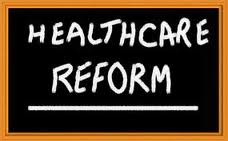US spending on healthcare increasing
The healthcare costs during the year 2009 was $2486.3 billion, which is the highest amount spent by any other country in the world. Additionally, the per capita spending on the individual was $7538, which is the highest among the developed countries. However, even with the highest spending on healthcare, USA fairs poorly in terms of mortality and life expectancy rates.
Reasons for lower health indicator rankings
Several reasons are the cause for the country’s poor performance in terms of health indicators. These include the lack of healthcare services access to a large portion of the country’s population, incurring more than one trillion dollars of additional costs annually, and the faulty payment systems. The payment system results encourages physicians to provide more services while ignoring the quality of the service that is provided. The proposed revisions to the US healthcare system is aiming to address these issues.

Coverage for higher number of individuals
The proposed reforms by the Patient Protection and Affordable Care Act and the Healthcare and Education Reconciliation Act, aims to include a larger population within the gamut of healthcare services. The reforms will make healthcare services available to approximately thirty-two million senior citizens by the end of the year 2019. The results of the reforms are expected to be visible from 2014.
Profile of individuals who will be added
Besides the senior citizens, the healthcare reforms also aims to provide services to the other sections of the US population. Expanding the coverage under Medicaid to the adults who earn less than 133% of the Federal Poverty Level is proposed. This will increase the cover for additional sixteen million residents. The increase in the number of people included in the healthcare reforms will provide a boost to the related sectors. The benefits will be seen by healthcare agencies, such as hospitals, medications manufacturing companies, manufacturers of medical instruments, and the health insurance service providers.
The adoption of the reforms expected to commence in 2014
The proposed reforms in the healthcare sector is expected to be implemented by 2012 in a majority of the states. The state-based insurance service providers will provide access to individuals earning between 133% and 400% of the Federal Poverty Level. These individuals will be able to claim tax credits for procuring health insurance. According to the Congressional Budgetary Office, the state insurance companies will cover approximately twenty-four million users.